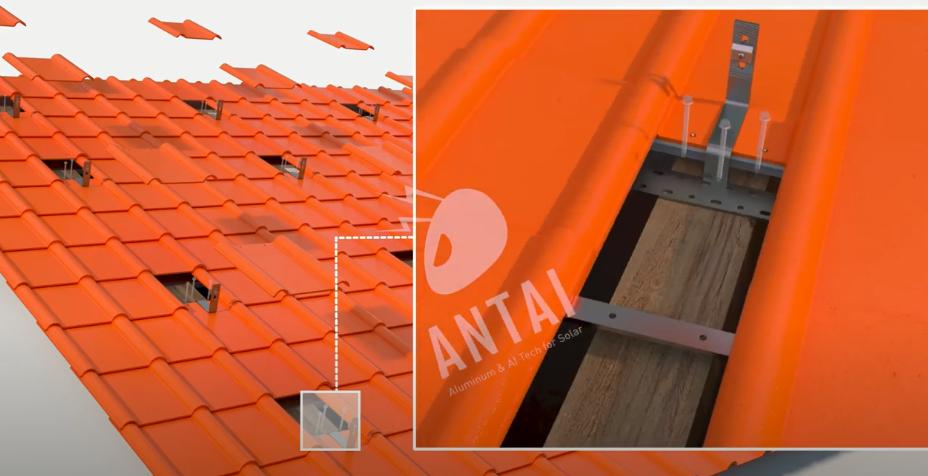Comparing Different Types of Tile Roof Solar Mounts
August 06, 2025
When considering solar energy options, an essential aspect is selecting the appropriate solar panel mounting kit for tile roof systems. Various types of mounts offer distinct advantages and disadvantages based on factors like installation ease, cost, and energy efficiency. This article will provide a balanced comparison of the most common types of tile roof solar mounts to aid in informed decision-making.

Fixed solar mounts are some of the most straightforward and widely used options for tile roofs. This type of solar panel mounting kit for tile roof applications is designed to hold solar panels at a fixed angle and orientation, which simplifies the installation process.
One significant advantage of fixed mounts is their relatively lower cost compared to adjustable or tracking systems. They provide reliable stability, particularly in windy environments, thus ensuring that panels remain securely attached. However, the limitations of fixed solar mounts lie in their inability to adjust for seasonal changes in sunlight exposure. Consequently, this may result in less optimal energy production during certain times of the year.
Adjustable mounts offer more flexibility than fixed systems, allowing installers to change the tilt angle and orientation of the solar panels post-installation. This feature makes an adjustable solar panel mounting kit for tile roof installations particularly appealing in regions where sun exposure varies significantly throughout the year.
The versatility of adjustable mounts can lead to increased energy production, as they can be repositioned according to seasonal needs. However, the complexity of installation may increase costs, both in terms of labor and materials. Additionally, ensuring a secure fit with tile roofs can require more planning and care to prevent leaks and damage to roofing materials.
Rail-less solar mounts are an innovative option designed specifically for tile roofs, eliminating the need for bulky rail systems. This solar panel mounting kit for tile roof applications streamlines the installation process by using mounting brackets that directly attach to the tiles themselves.
One of the primary benefits of rail-less systems is their aesthetic appeal, as they tend to create a cleaner look on rooftops without visible rails. Furthermore, they minimize the risk of leaks since fewer penetrations into the roof are required. However, compatibility with various tile types can be a concern, and proper installation is critical to ensure durability and performance.
Choosing the right solar panel mounting kit for tile roof installations requires careful consideration of the specific requirements and conditions of the property. Fixed mounts, adjustable mounts, and rail-less systems each offer unique advantages and challenges. By understanding these differences, homeowners can make informed decisions that align with their energy needs and budget constraints. At Antaisolar, we are committed to providing high-quality solutions tailored for tile roof applications, including our easy-to-install hook systems designed for efficient and durable installations. We strive to enhance your experience in transitioning to renewable energy with innovative products.

Fixed Solar Mounts
Fixed solar mounts are some of the most straightforward and widely used options for tile roofs. This type of solar panel mounting kit for tile roof applications is designed to hold solar panels at a fixed angle and orientation, which simplifies the installation process.
One significant advantage of fixed mounts is their relatively lower cost compared to adjustable or tracking systems. They provide reliable stability, particularly in windy environments, thus ensuring that panels remain securely attached. However, the limitations of fixed solar mounts lie in their inability to adjust for seasonal changes in sunlight exposure. Consequently, this may result in less optimal energy production during certain times of the year.
Adjustable Solar Mounts
Adjustable mounts offer more flexibility than fixed systems, allowing installers to change the tilt angle and orientation of the solar panels post-installation. This feature makes an adjustable solar panel mounting kit for tile roof installations particularly appealing in regions where sun exposure varies significantly throughout the year.
The versatility of adjustable mounts can lead to increased energy production, as they can be repositioned according to seasonal needs. However, the complexity of installation may increase costs, both in terms of labor and materials. Additionally, ensuring a secure fit with tile roofs can require more planning and care to prevent leaks and damage to roofing materials.
Rail-less Solar Mounts
Rail-less solar mounts are an innovative option designed specifically for tile roofs, eliminating the need for bulky rail systems. This solar panel mounting kit for tile roof applications streamlines the installation process by using mounting brackets that directly attach to the tiles themselves.
One of the primary benefits of rail-less systems is their aesthetic appeal, as they tend to create a cleaner look on rooftops without visible rails. Furthermore, they minimize the risk of leaks since fewer penetrations into the roof are required. However, compatibility with various tile types can be a concern, and proper installation is critical to ensure durability and performance.
Conclusion
Choosing the right solar panel mounting kit for tile roof installations requires careful consideration of the specific requirements and conditions of the property. Fixed mounts, adjustable mounts, and rail-less systems each offer unique advantages and challenges. By understanding these differences, homeowners can make informed decisions that align with their energy needs and budget constraints. At Antaisolar, we are committed to providing high-quality solutions tailored for tile roof applications, including our easy-to-install hook systems designed for efficient and durable installations. We strive to enhance your experience in transitioning to renewable energy with innovative products.
end
